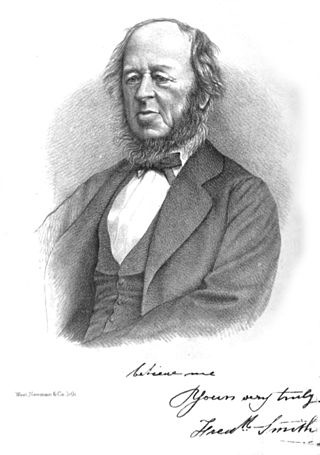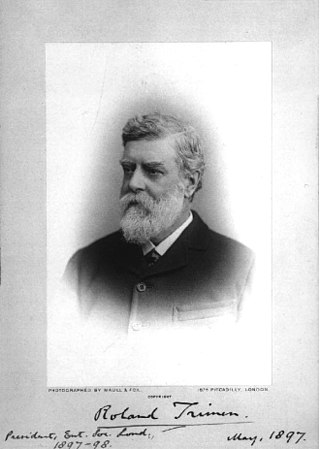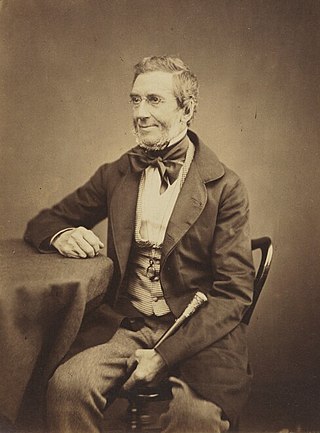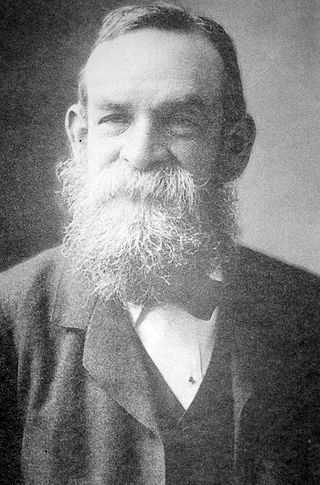
Henry Denny (1803 – 7 March 1871) was an English entomologist, known as an authority on parasitic insects. He served as the first curator of the Leeds Museum. His son Alfred Denny became a professor of zoology at the University of Sheffield.

Henry Denny (1803 – 7 March 1871) was an English entomologist, known as an authority on parasitic insects. He served as the first curator of the Leeds Museum. His son Alfred Denny became a professor of zoology at the University of Sheffield.

Denny was born in Norwich. He became interested in entomology through contact with John Curtis and William Kirby. In 1821, he was a guest of Kirby for a month at Barham Rectory. He became the first salaried curator of the Leeds Museum, then the museum of the Leeds Literary and Philosophical Society, appointed in 1826. He held that post for 45 years. Also in 1825, he published a monograph on the British species of ant-loving beetles in the genus Pselaphus . In 1832 he lectured on botany at the Leeds School of Medicine. The British Association for the Advancement of Science in 1842 made a grant to Denny for the study of British Anoplura; William Kirby tried to bring him in as illustrator of his Introduction to Entomology, and he contributed a few plates for it. [1] [2] Denny was elected Associate of the Linnean Society in 1843. He also served as a secretary to the Yorkshire Geological and Polytechnic Society from 1845 until his death. [3]
A good friend of Charles Darwin, Henry Denny was asked if lice affecting humans could have speciated in different parts of the world. Denny's response would be included in his treatise "The Descent of Man, and Selection in Relation to Sex". Denny's response to Darwin found its way into the book: [4] "I am informed by Mr. Denny that the most different kinds of dogs, fowls, and pigeons, in England, are infested by the same species of Pediculi or lice."
Denny's published writings were: [1]
{{cite journal}}: CS1 maint: DOI inactive as of August 2024 (link)Attribution
![]() This article incorporates text from a publication now in the public domain : Stephen, Leslie, ed. (1888). "Denny, Henry". Dictionary of National Biography . Vol. 14. London: Smith, Elder & Co.
This article incorporates text from a publication now in the public domain : Stephen, Leslie, ed. (1888). "Denny, Henry". Dictionary of National Biography . Vol. 14. London: Smith, Elder & Co.
Louse is the common name for any member of the clade Phthiraptera, which contains nearly 5,000 species of wingless parasitic insects. Phthiraptera has variously been recognized as an order, infraorder, or a parvorder, as a result of developments in phylogenetic research.

John Sell Cotman was an English marine and landscape painter, etcher, illustrator, and a leading member of the Norwich School of painters.

John Obadiah Westwood was an English entomologist and archaeologist also noted for his artistic talents. He published several illustrated works on insects and antiquities. He was among the first entomologists with an academic position at Oxford University. He was a natural theologian, staunchly anti-Darwinian, and sometimes adopted a quinarian viewpoint. Although he never travelled widely, he described species from around the world on the basis of specimens, especially of the larger, curious, and colourful species, obtained by naturalists and collectors in England.

James Francis Stephens was an English entomologist and naturalist. He is known for his 12 volume Illustrations of British Entomology (1846) and the Manual of British Beetles (1839).

George Robert Waterhouse was an English naturalist. He was a keeper at the department of geology and later curator of the Zoological Society of London's museum.

William Kirby was an English entomologist, an original member of the Linnean Society and a Fellow of the Royal Society, as well as a country rector, so that he was an eminent example of the "parson-naturalist". The four-volume Introduction to Entomology, co-written with William Spence, was widely influential.

Frederick Smith was a British entomologist who worked at the zoology department of the British Museum from 1849, specialising in the Hymenoptera.

Roland Trimen FRS was a British-South African naturalist, best known for South African Butterflies (1887–89), a collaborative work with Colonel James Henry Bowker. He was among the first entomologists to investigate mimicry and polymorphism in butterflies and their restriction to females. He also collaborated with Charles Darwin to study the pollination of Disa orchids.

John Curtis was an English entomologist and illustrator.

Francis Walker was an English entomologist. He was born in Southgate, London, on 31 July 1809 and died at Wanstead, England on 5 October 1874. He was one of the most prolific authors in entomology, and stirred controversy during his later life as his publications resulted in a huge number of junior synonyms. However, his assiduous work on the collections of the British Museum had great significance.

Alexander Henry Haliday was an Irish entomologist. He is primarily known for his work on Hymenoptera, Diptera, and Thysanoptera, but worked on all insect orders and on many aspects of entomology.

William Forsell Kirby was an English entomologist and folklorist.

The Royal Entomological Society is devoted to the study of insects. Its aims are to disseminate information about insects and improving communication between entomologists.
Entomology, the study of insects, progressed between 1800 and 1850, with the publication of important texts, definition of new orders such as Aphaniptera and Strepsiptera, and the shift to specialization. The following timeline indicates significant events in entomology in this time period.

Vernon Lyman Kellogg was an American entomologist, evolutionary biologist, and science administrator. A major contribution was his study of bird lice and their hosts. He established the Department of Zoology at Stanford University in 1894, and served as the first permanent secretary of the National Research Council in Washington, D.C.

Monographia Chalciditum by Francis Walker, published in two volumes in 1839, was a founding work of entomology, introducing new genera of chalcidoid Hymenoptera later to be ranked as families. The work is a compilation of descriptions published in the Entomological Magazine. In its preparation Walker used descriptions provided by the Irish entomologist Alexander Henry Haliday.

This is a list of the writings of Charles Darwin.

The Entomological Magazine was a publication devoted to entomology.

Louis Compton Miall FRS was an English palaeontologist and biologist who was Professor of Biology at the University of Leeds.

Walter Douglas Hincks was a British entomologist and museum curator. He was a world expert on the Dermaptera.